2020 may have been something of a write off for many industries but the transport sector has seen ripples turn to waves, and waves into real change. The coronavirus pandemic has seen new van sales down throughout the year, with used vans becoming a commodity so sought after that the same tactics used to steal and sell high performance cars are now being employed to take the venerable white van from its rightful owner.
While this sudden upheaval is in no small part a result of the global pandemic, there is a growing voice that the decline in new petrol and diesel van sales is also partly the effect of an ever snowballing environmental concern. Here at Cool Running Rental we support and are eager to push for new technologies and innovations that can trickle down into our refrigerated van hire services, helping our business and customers alike.
The shift in public opinion is only 50% of this concern however, and we believe many businesses may be looking to future rules and regulations for guidance on the investments they should be making now. Under the UK Government’s green plans internal combustion engine (ICE) vehicles will be banned from sale in 2030, forcing all new cars to be either fully electric (EV) or plug in hybrid (PHEV), with the latter only being allowed until 2035.
This dramatic step follows the natural growth of popularity for electric vehicles in the UK, with an average 1 in 7 new cars now being EV or PHEV, numbers which are similar to and rapidly closing in on the number of new diesels sold in the UK. But what are the options for commercial usage? Are there environmentally friendly options available to the average business owner who doesn’t have the capacity to buy into an entire fleet?
Yes.
Electric vans for the commercial market
The future is now, and the fairytale zero emissions vehicles of the early 2000’s have truly become a reality. Hybrid technology has existed since the late 19th century (1894 to be exact) but has only truly taken off in the last 3 decades. As a result of this rapid technological development the requirement to have an onboard ICE of any kind has faded into the past.
Now we are seeing a growing number of purely electric commercial vehicles taking to the roads, and in the years to come these will become the most common environmentally friendly transport solution.
Today’s electric vans are not a perfect solution, as naysayers are quick to emphasise, but the UK’s commitment to greener transport has seen support for the platforms multiply year on year. As of the start of 2021 there are now more electric vehicle charging ports in the UK than conventional petrol stations, and as the project to install them is far from completed we can expect this ratio to tilt further and further towards the technology of tomorrow.
The Mercedes eVito
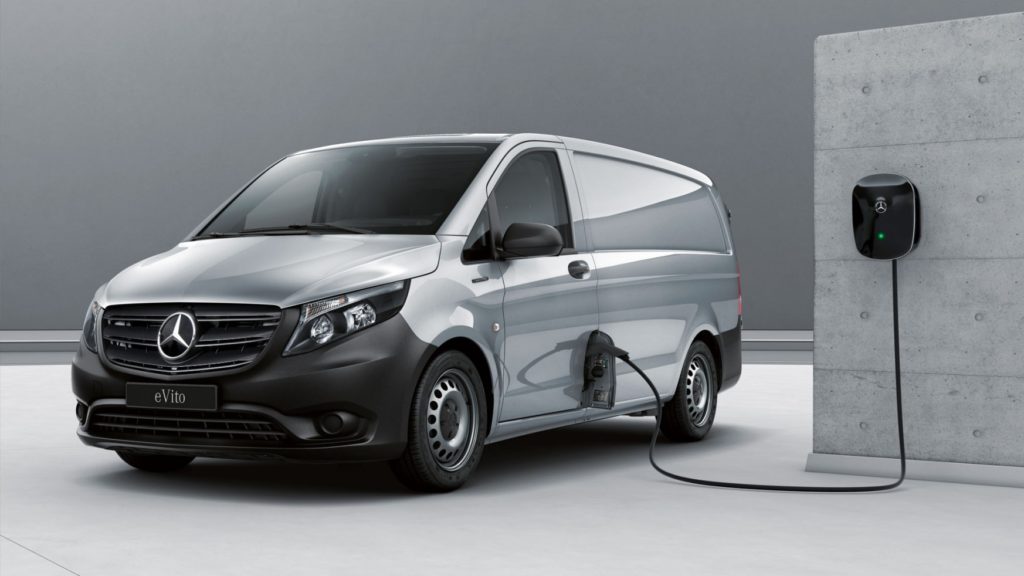
One of the most popular temperature controlled vans in our leasing fleet is the Mercedes Vito, a medium sized van that forms the perfect bridge between compact panel vans and large box trucks. To see this customer favourite running into the future on clean energy is a fantastic sight for us.
The new EV offering differs from it’s ICE predecessor in a few areas however. Firstly and perhaps most noticeably the range on a single “tank” is dramatically reduced from around 400 miles to approximately 100, a devastating loss for businesses hoping to go all electric for long range journeys. Even with the UK’s rapidly expanding network of charging stations, the time to “refill” the batteries is hardly an F1 pit stop, and so could lead to delays in travel time.
However for those hoping to operate their vehicles in and around urban environments the eVito offers them the opportunity to make their shorter range journeys without contributing to the pollution of their own air. Removing the need to visit a petrol station will also help to increase efficiency, meaning short range delivery times could actually be reduced.
It’s not just about the range though, and as the technology powering the eVito evolves so does the range of amenities provided inside. As Mercedes commit to their new panel van they have kitted it out with comfort and safety features that would have seemed alien in the previous ICE offering.
Up to date DAB audio, enhanced security through improved locks and alarms, safety systems like parking sensors and rear cameras and a host of comfort and other driver assists all combine to make the eVito one of the most technologically advanced commercial vehicles on the road today.
The Volkswagen ABT Transporter
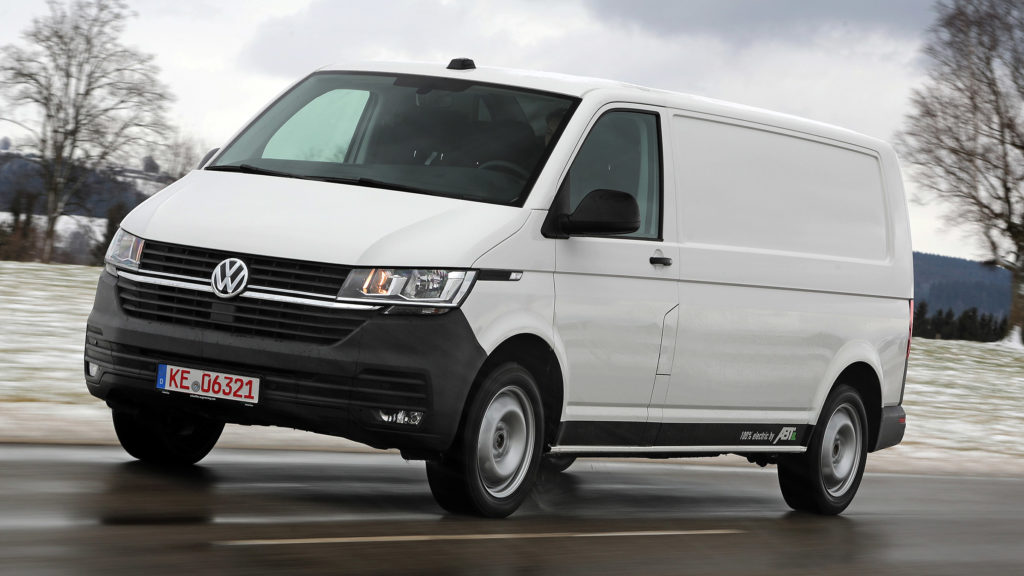
Just like Mercedes, our other preferred German manufacturer has brought their flagship panel van into the EV revolution. The electric Transporter is a joint endeavour between VW and ABT, the latter of whom supplies the power unit.
As is true with the eVito, the new Transporter also suffers from a reduced range, with around 80 miles to its name. While reduced, this is still allowing the user to carry a massive payload up to 996kg inside the van’s new frame.
Where the Transporter loses out in range however, it more than makes up for it in smart safety features designed to make using this vehicle around others as safe as can be, boosting its urban appeal even further.
Onboard the Transporter there are 3 systems which standout to us. Firstly, front assist with combined city emergency braking. Put simply, the new Transporter scans the area it is about to drive into and should it detect a threat, either in the form of a close car or even a pedestrian, it will prime the brakes ready for you to use them the most effectively. Should you not apply the brakes, and the threat persists, the Transporter will then apply the brakes itself but only partially.
This partial application is crucial as a sudden stop of the vehicle due to a technological error could prove catastrophic. A gentle slowing allows those around to react accordingly in the event of a malfunction, and should the brakes be needed for real, they have at least taken a portion of the impetus out of a crash, which could prove the difference between life and death.
The second driver assist that we find interesting is designed to keep the vehicle on the road, and you safe inside it. Driver steering recommendation is a system that helps to stabilise the vehicle and keep you on the road. In the event of an oversteer that could lead to a crash or even a rollover, the Transporter will fight back, and ease you into a gentler steering arc keeping all 4 wheels on the road. Should the front assist detect it has steered you into a hazard, it will also begin to slow you to safety.
Finally the electric Transporter has taken the fight to the plague of all high-sided vehicles: crosswinds. Should you find yourself driving above 50mph and suddenly being struck by high winds, the Transporter will apply the brakes and slow you to safety. This feature is a new addition to the VW electronic stabilisation programme, and will activate automatically when it detects a gust strong enough to throw your vehicle off course and into danger.
The future of electric vans
As we have discussed the only limiting factor for an EV commercial van is the range, but we are still in very early stages of electric only technology. As time goes on the amount of energy that can be stored will be improved, allowing these vehicles and their owners to reliably go further and further afield.
But what about now? Many fleet operators rely on their ICE vans to take them on the long journeys that keep British industry turning over. Luckily for them there is a new technology just beginning to poke its nose into the commercial sector.
Hydrogen powered commercial vehicles
Yes, you read that right. Whereas electric vehicles took over a hundred years to realise their potential, the science fiction solution of only 10 years ago is now fingertipping its way into the open market. Hydrogen powered cars and vans will carry the modern transport industry into the next century and maybe for many more to come.
The reason for this excitement is that hydrogen power units combine the achievable range of an ICE with the cleanliness of an electric vehicle.
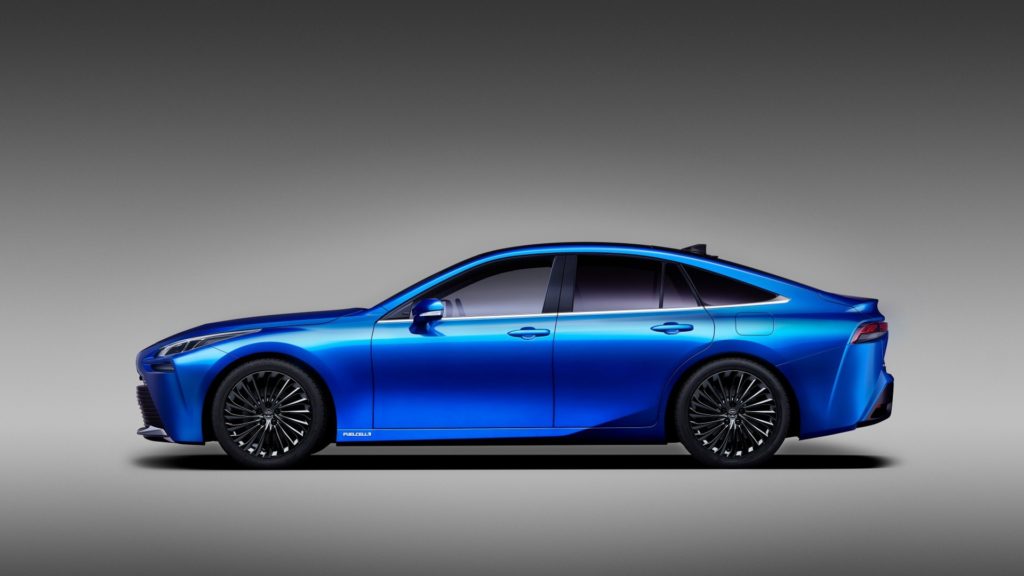
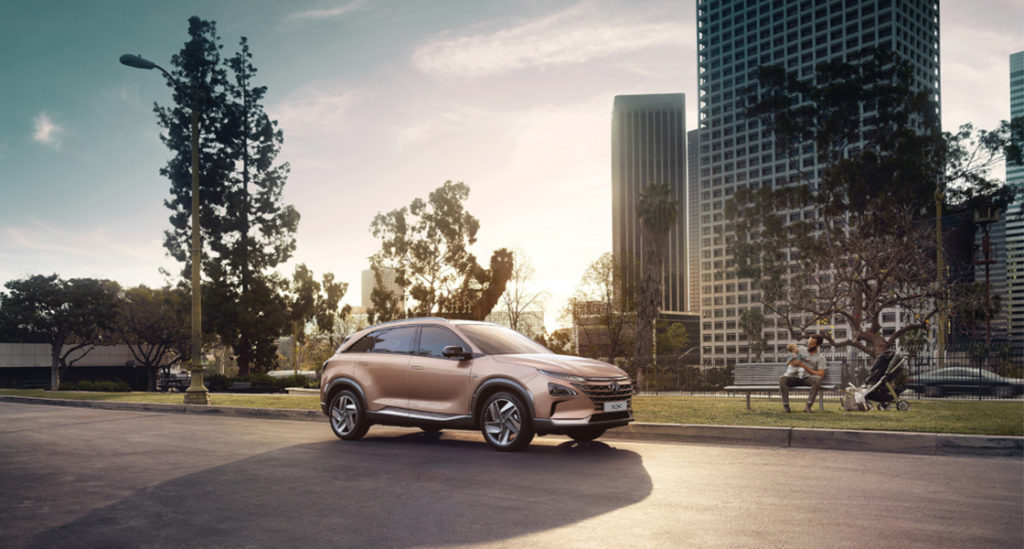
There are 2 commercially available fuel cell electric vehicles (FCEV) on the market as of the beginning of 2021, the Hyundai NEXO and Toyota Mirai, and both of these vehicles take the form of a traditional hybrid but with the ICE replaced by a hydrogen fuel cell. This combination produces an enormous amount of energy, and the only emission or byproduct is purified oxygen (yes, these engines actively clean the air they put out), and harmless droplets of water.
On top of the environmental leap forwards these engines represent, they do not present a serious step backwards in terms of practicality. Both of these first generation vehicles are capable of over 400 miles from a single fuelling, and that fuelling only takes around 5 minutes. While this might be marginally less, and marginally slower than an ICE based vehicle, it is a vast step forward from the practicality of an EV.
There is also the question of safety, as the Hindenburg disaster taught us hydrogen is not something to be messed around with. In reality, the likelihood of hearing cries of “oh the humanity” from every street corner is very low. Since the early 20th century our safety technology has improved hand over fist a hundred fold, and instead of being wrapped in a cotton sack, the hydrogen is stored within a carbon fiber safety cell. It’s also important not to forget that petrol is hardly as safe as drinking water, and yet cars burning by the roadside is an alien sight for us all.
This protective technology is far from new, and is largely the reason that F1 cars no longer explode when crashing at over 200mph (with Romain Grosjean’s Bahrain crash being the exception). It is not uncommon to see technology developed at the pinnacle of motorsport making its way into everyday vehicles, and that principle is the same from cars to vans.
The Siemens Mobility hydrogen experiment
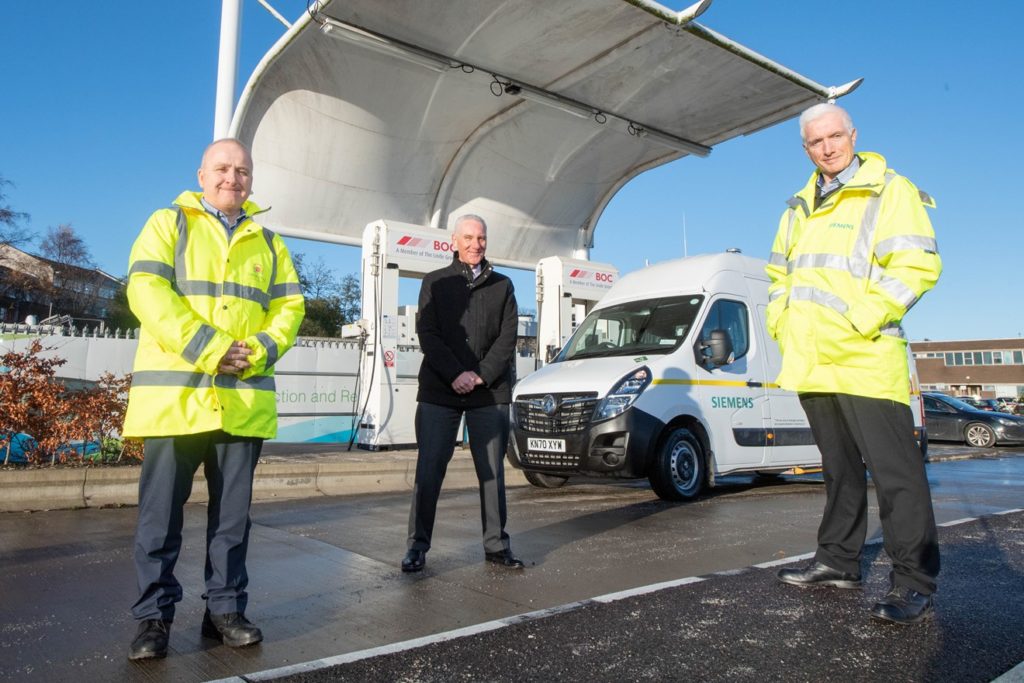
Engineering giant Siemens is already taking the hydrogen concept and assessing its suitability in the venerable white van. Their project in conjunction with Aberdeen City Council has created the first fuel cell/internal combustion hybrid, that can do a staggering 180 miles per gallon. This vehicle runs on traditional diesel and sustainably sourced green hydrogen to carry itself for hundreds of miles, and takes less than 10 minutes to refuel.
Where the electric revolution began with the EV/ICE hybrid, the hydrogen solution is cutting its teeth in the same way, and in the next few years we expect to see great leaps and bounds and maybe even FCEV technology becoming the new mainstream for long range vehicles.
Our final thoughts
Cool Running Rental’s reliance on commercial vehicles for our refrigerated van hire services makes news that the industry is pushing ahead into the future very welcome indeed. Our fleet is highly diverse, with us offering pharmaceutical vans for hire alongside our range of large and small conventional vans. We also pride ourselves on offering nationwide leasing, and so an environmentally friendly option that accommodates this puts our minds at ease.
If you have any questions about this article, or feel that your business could benefit from one of our refrigerated vans for hire or sale then please get in touch with us today by clicking here.




